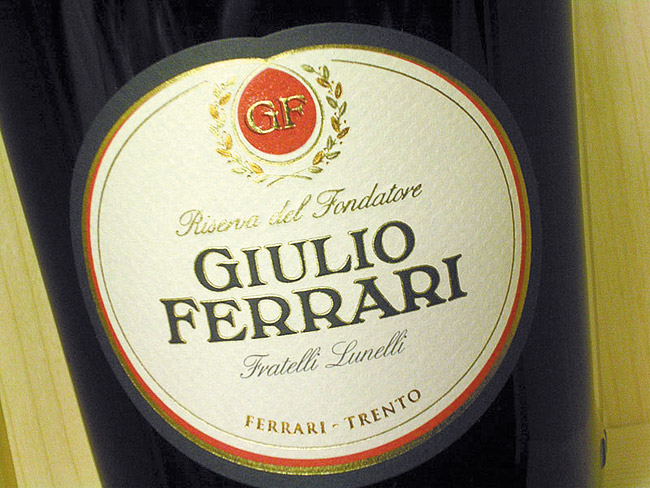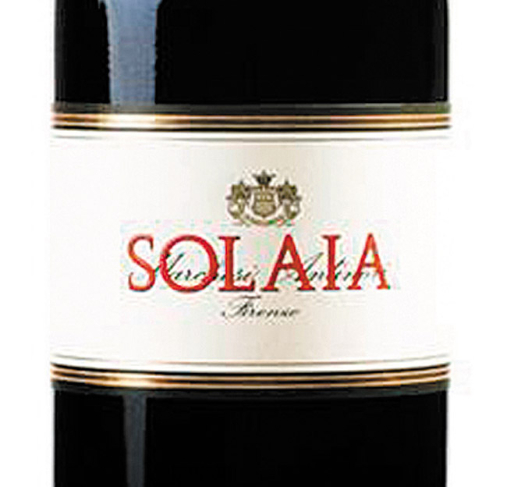Showcasing Italy’s Fine Wines: Salute!
I can’t remember who told me: “You go to France for the wine and to Italy for the food.”
Whoever said it obviously hasn’t tried enough Italian wines. I was lucky enough to be invited to put together an Italian wine dinner for a friend of mine and his guests, and I have to say that these Italian wines would make many French wine producers weep.
mw-vino-040214-002
We started the evening with what I call the “Clos du Mesnil” of Italy. It was the 2001 Ferrari Cuvee Giulio ($139) from the Trento DOC. The Trento DOC is for sparkling wine made in the Traditional Method (aka Champagne Method), so the winemaking process is identical to that of Champagne. This wine is 100 percent Chardonnay and is aged for 10 years prior to disgorgement. This long aging process gives the wine its signature brioche and toasted bread note. Ferrari’s Cuvee Giulio is named after the founder of the house, and it’s their best wine. It is the finest sparkling wine from Italy I’ve tasted. This bottle was beautifully complex, rich with fresh-baked bread notes, citrus zest, hints of roasted nuts and creaminess. It was gorgeously elegant and refined.
We then went on to a pair of beautiful white wines. The first was the 2011 Feudi di San Gregorio Greco di Tufo ($22). This is a unique white from Campania grown on calcareous soils very similar to the Tufa soils found along the Loire River valley. The resulting wine is light-bodied with a heady and airy, almost floral bouquet but attached to a minerality that reminds me a bit of Chablis. It has a fresh acidity and long finish. The second white comes from one of Italy’s greatest white wine producers in Sylvio Jermann. The 2012 Jermann Pinot Grigio ($29) from Collio is one of Italy’s best examples of this ubiquitous grape. This is not your light and ephemeral white. This wine has texture, but without the use of wood. Ripe apples and pears abound, along with a light scent of dry grass and a hint of green herbs. We paired this with a dish of fresh Burrata, extra-virgin olive oil, sundried tomatoes and basil pesto. I found the Greco di Tufo to be the better pair here, as it brought out more of the flowery basil in the dish and cleansed the palate with a brighter acidity.
Our first red wine pair of the evening was a titanic battle between Barolo and Barbaresco. 2006 Giacomo Conterno Barolo “Cascina Francia” ($169) next to the 2005 La Spinetta Barbaresco “Valeirano” ($129). Cascina Francia is the first vineyard that the legendary Conterno purchased in 1974. This is also the source for the vaunted “Monfortino” bottling. It is 100 percent Nebbiolo aged for six years in old Slavonian oak barrels. This estate is known for its traditionalist style and is every bit its champion. The wine showed a spicy and herbal edge with dried roses, cinnamon and dried black cherries galore. On the palate it was strong, and despite having been decanted two hours prior, it still had a significant amount of tannin. This is regal expression of Nebbiolo with plenty of life still ahead. At La Spinetta, this Barbaresco is aged for 21 months in new French oak barriques, giving the wine a more vanillin note along with a riper edge of red and black cherries. It was more polished on the palate as well, and maybe even modern. It was delicious nonetheless. The dish was Risotto with Salsicia (Italian sausage) and peas. I thought the Barbaresco went better with the dish, but I enjoyed the Barolo more as a wine on its own.
Last and certainly not least came two of Italy’s most heralded wines. 2010 Antinori Solaia ($299) and 2003 Quintarelli Amarone della Valpolicella Riserva ($329). The Antinori family is synonymous with greatness in Italy, and Solaia is one of the progenitors of the Super Tuscan category. The 2010 is such a baby, made from 80 percent Cabernet Sauvignon, with the balance made up of Cabernet Franc and Sangiovese. But it is a powerful lad. Mocha, white chocolate, black plums, sweet vanilla extract and currants explode from the glass. It is full-bodied with structure to last for decades. This is of “First Growth” quality, bar none! As hedonistic as the Solaia was, the Quintarelli Amarone Riserva was even more so.
I could not stop sniffing my glass. Each time I nosed it, I could smell something different: cinnamon, clove, blueberry, cranberry, wet soil, pencil shavings, dried herbs and more. It is extra-full bodied, tipping the scale at more than 16 percent alcohol. But somehow it does not present itself as being over the top. It has a sleek tannin structure, probably because it was aged in barrel for some six years. The flavors wash over the tongue like waves on the beach. I imagine this wine could go on for another 30 years and longer. Osso Bucco with garlic and spinach polenta was a great foil for these two wines, but I gave my heart to the Quintarelli Amarone Riserva this night.
It was a real pleasure and privilege to be a part of this dinner, as so many of these wines are scarce and in rarefied air. This dinner proves that Italy’s wines not only can be world-class, but also in many cases are in a class of their own.
Roberto Viernes is a master sommelier.
rviernes@ southernwine.com
Twitter: @Pinotpusher







